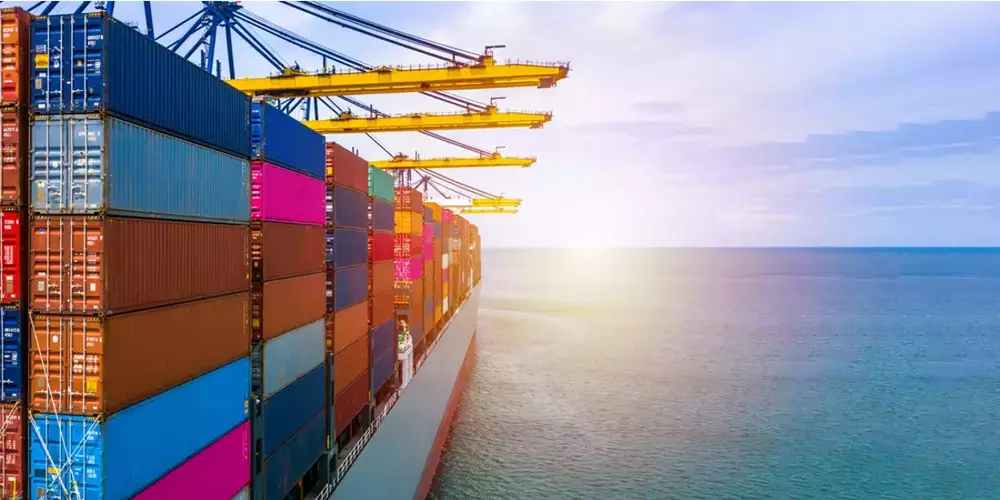
Freight rate fall on trades out of India continues as exporters bet on new fiscal year
MUMBAI : Container freight rates on trades out of India have continued to soften from the Red Sea crisis-driven highs, according to the latest market analysis.
On the westbound India-Europe trade, average short-term contract rates for 20-foot container bookings from West India [Jawaharlal Nehru Port (JNPT)/Nhava Sheva or Mundra Port] to Felixstowe/London Gateway (UK) in April have cooled to US$2,700 per 20-foot container and US$2,800 per 40-foot container, down from US$2,750 and US$3,100, respectively, at the end of March.
For Indian loads to Rotterdam (the Netherlands), April TEU rates have stood steady month-on-month at US$2,750 per 20-foot container, while FEU rates have declined to US$2,850 per 40-foot container, from US$3,000 in March.
For West India-Genoa (the West Mediterranean) bookings, contract rates have slipped to US$3,100/TEU, from US$3,300, and US$3,300/FEU, from US$3,700, the analysis shows.
Similarly, eastbound cargo (imports into India) rates for these port pairings have moderately slid from end-March averages to US$1,700/TEU and US$2,000/FEU, from US$1,800 and US$2,100, respectively, for bookings from Felixstowe/London Gateway to West India, while for shipments from Rotterdam to West India, rates have slumped to US$950/TEU and US$1,500/FEU, from US$1,150 and US$1,700/FEU, respectively.
For trades from the West Mediterranean (Genoa) to West India, the analysis put March rates at US$1,000/TEU, down from US$1,100, and US$1,150/FEU, down from US$1,300/FEU.
Short-term contract prices on the India-US trades have also seen downward corrections from the Red Sea crisis-linked boost. Average rates in April for shipments from West India (Nhava Sheva/Mundra) to the US East Coast (New York) have stood at US$3,650/TEU, down from US$3,750, and US$4,300/FEU, down from US$4,350/FEU in March. For Indian container loads moving to the US West Coast (Los Angeles), 20-foot container rates have stood firm at US$2,400/TEU, but 40-foot rates have dropped to US$2,500 per FEU, from US$3,100 reported at the end of March.
However, for the West India-US Gulf Coast (Houston) trades, April rates have moved up to US$4,200/TEU and US$4,500/FEU, from US$3,950 and US$4,400, respectively, according to the analysis.
Short-term contract rates on the US-India trades (return leg) have ticked up month-on-month, with USEC-West India pricing reported at US$600/TEU and US$850/FEU, compared with US$550 and US$800. However, for US West Coast-West India bookings, rates have climbed to US$1,300/TEU and US$1,500/FEU, from US$1,150 and US$1,400.
Average rates from the US Gulf Coast to West India have also moved up from March averages – at US$1,300/TEU and US$2,050/FEU, versus US$1,100 and US$1,600.
Carrier contract rates on intra-Asia trades out of India have continued to be in negative territory, on most port pairings, the analysis found. For West India-Yantian (South China), the analysis put average rates in April at US$20/TEU and US$40/FEU, and for West India-Tianjin (North China), carriers have revised quotes to as low as US$10/TEU and US$20/FEU, with no major changes reported from March.
For West India-Shanghai (Central China) trades, rates have also remained in negative territory, at as low as US$5 per TEU or FEU.
Also, for West India loads to Singapore, carriers are accepting bookings at as low as US$5/TEU or FEU.
April rates for West India-Jebel Ali (Dubai) bookings have stood at US$200/TEU, down from US$250, and US$300/FEU, down from US$325.
Meanwhile, despite multiple challenges, Indian merchandise exports by value in fiscal year 2023-24, which ended on March 31, were down just 3% year-over-year, presenting a resilient outlook for the emerging economy. According to provisional government data, annual exports hit US$437 billion.
“The exporters have consistently been performing, driving the growth of exports, and also adding to the growth momentum of the economy,” Mr. Ashwani Kumar, President of the Federation of Indian Export Organisations (FIEO) said in a statement.
Mr. Kumar also noted: “The major growth drivers of merchandise exports during fiscal year 2023-24 were electronic goods, drugs and pharmaceuticals, engineering goods, iron ore, cotton yarn, handloom products etc. and ceramic products and glassware, which itself is a good sign as most of these sectors are labour-intensive sectors, giving boost to employment creation in the country.”
He went on to explain: “Recent tensions in West Asia, especially the threat to consignments routing through the Red Sea, have further added to the woes of the exporting community, as the freight rates along with the insurance cost have gone up unimaginably high, in addition to the burden of various surcharge.
Mr. Kumar added: “However, much will depend on new contracts to be signed with buyers during the new fiscal as the exporters have been absorbing the burden of increased freight costs on old contracts.”
According to FIEO: “The need of the hour is to address the Middle East geopolitical situation, Red Sea crisis challenges by ensuring availability of marine insurance and rationale increase in freight charges.”
The association also appealed: “The sector also needs easy and low cost of credit, marketing support, besides conclusion of some of the key free trade agreements with the UK, Oman and EU soon.”
